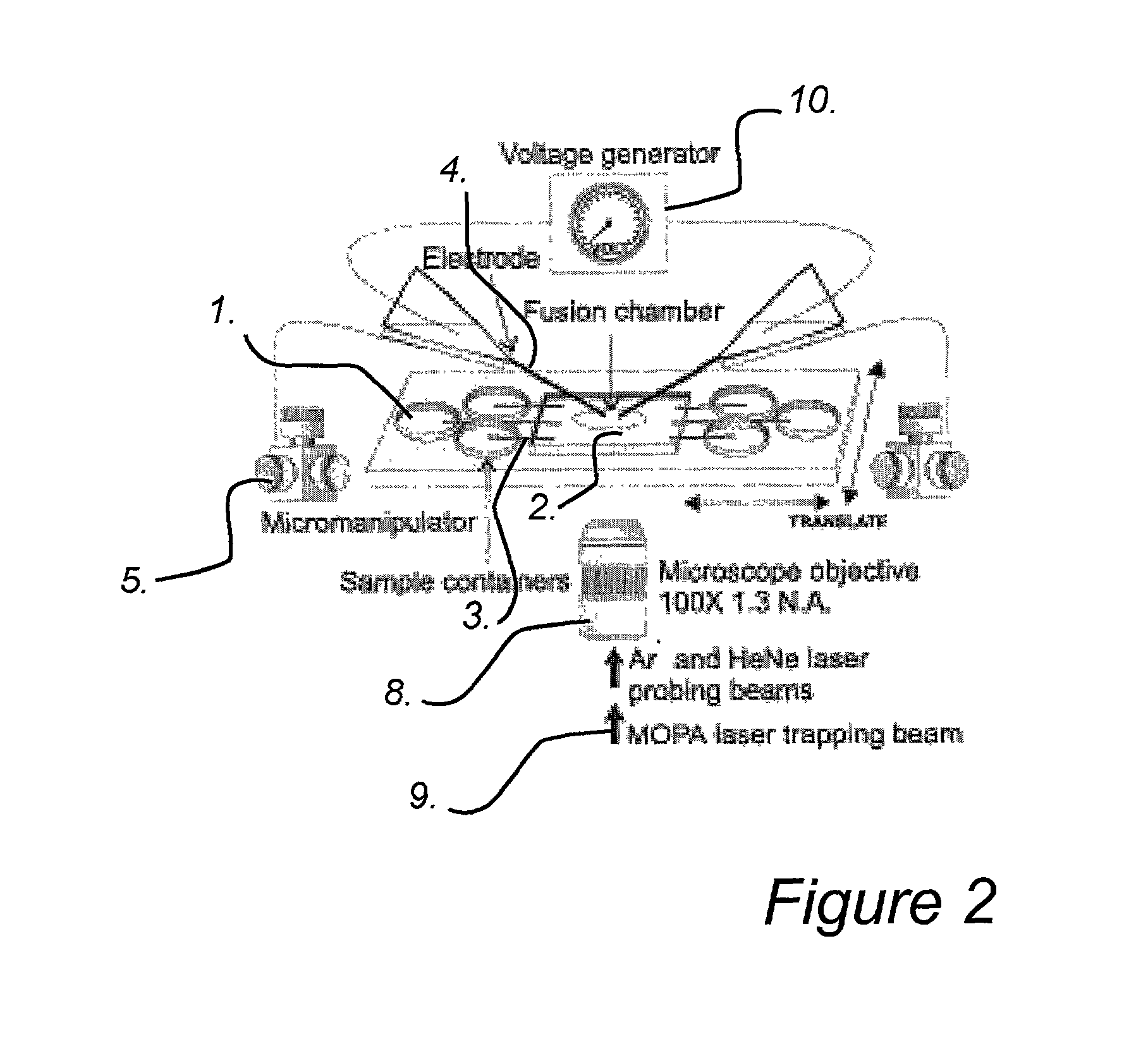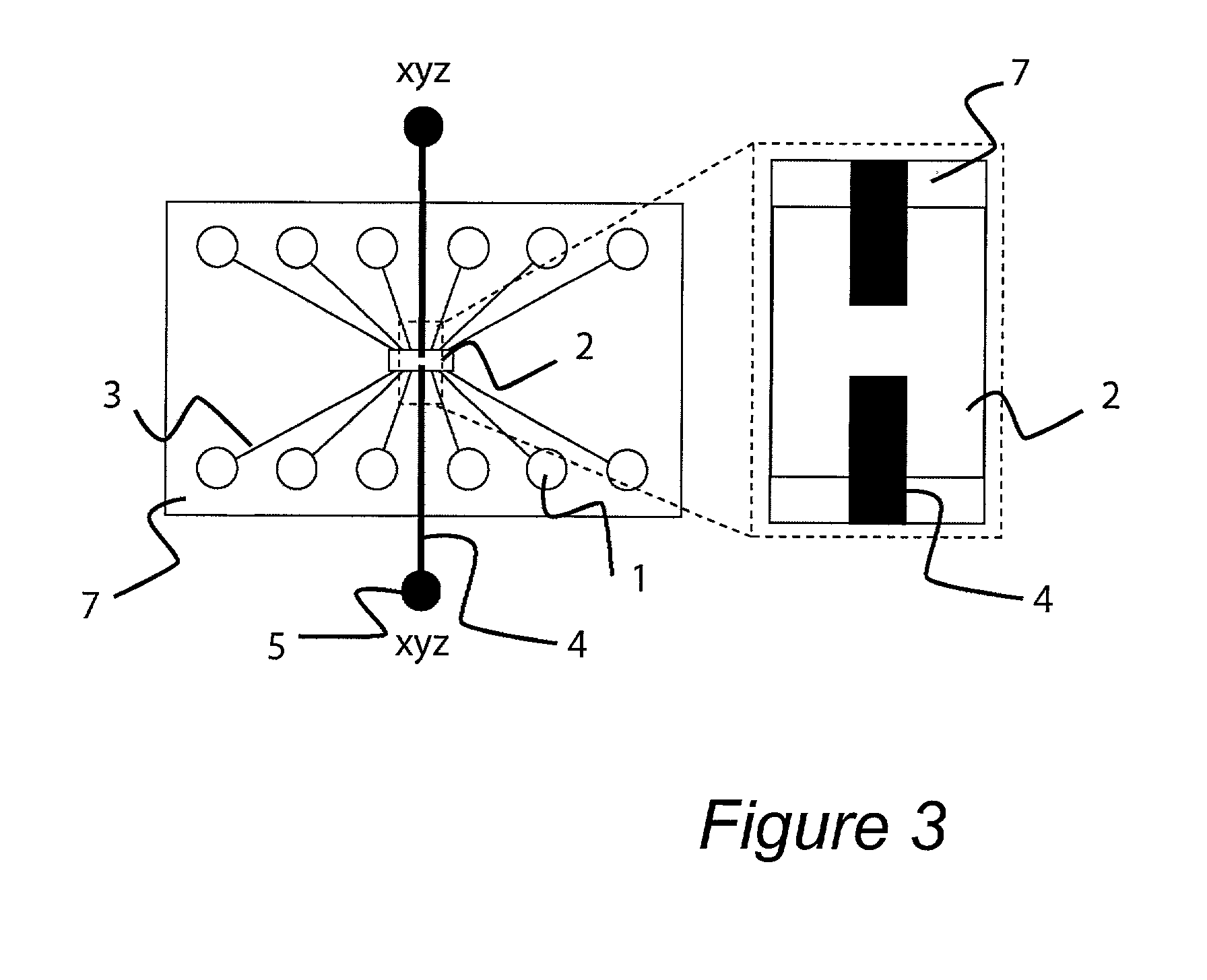Method and apparatus for manipulation of cells and cell-like structures focused electric fields in microfludic systems and use thereof
- Summary
- Abstract
- Description
- Claims
- Application Information
AI Technical Summary
Benefits of technology
Problems solved by technology
Method used
Image
Examples
examples
Experimental Section
Construction of Microfluidic Device
[0061]Microchannels with 10–30 μm i.d. and 30–100 μm o.d. were created by pulling heated borosilicate glass capillaries (0.86 mm i.d. and 1.5 mm o.d. from Clark Electromedical Instruments, Pangbourne, Reading, UK), and cut into smaller pieces, typically 3-to-5 mm long. The capillaries were contacted onto no. 1 borosilicate microscope cover slips using transparent glue (Karlssons, Cederroth, Upplands Väsby, Sweden) by gently pouring the glue in a thin line (about 2 mm thick) over a capillary. The glue was also used to create the barriers between the different containers.
Microscopy and Optical Trapping
[0062]Optical trapping and fluorescence imaging systems were built in-house [Chiu, D. T.; Wilson, C. F.; Ryttsén, F.; Strömberg, A.; Farre, C.; Karlsson, A.; Nordholm, S.; Gaggar, A.; Modi, B. P.; Moscho, A.; Garza-López, R. A.; Orwar, O.; Zare, R. N. Science 1999, 283, 1892–1895]. The optical trap was formed by bringing the 992 nm o...
PUM
| Property | Measurement | Unit |
|---|---|---|
| Diameter | aaaaa | aaaaa |
| Diameter | aaaaa | aaaaa |
| Structure | aaaaa | aaaaa |
Abstract
Description
Claims
Application Information
 Login to View More
Login to View More - R&D
- Intellectual Property
- Life Sciences
- Materials
- Tech Scout
- Unparalleled Data Quality
- Higher Quality Content
- 60% Fewer Hallucinations
Browse by: Latest US Patents, China's latest patents, Technical Efficacy Thesaurus, Application Domain, Technology Topic, Popular Technical Reports.
© 2025 PatSnap. All rights reserved.Legal|Privacy policy|Modern Slavery Act Transparency Statement|Sitemap|About US| Contact US: help@patsnap.com



